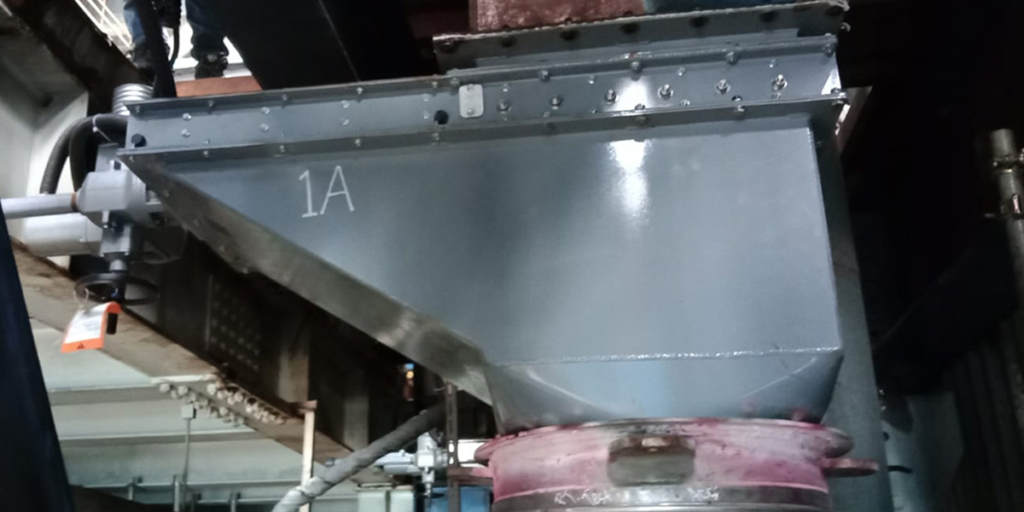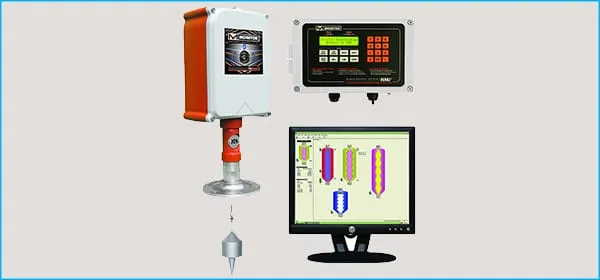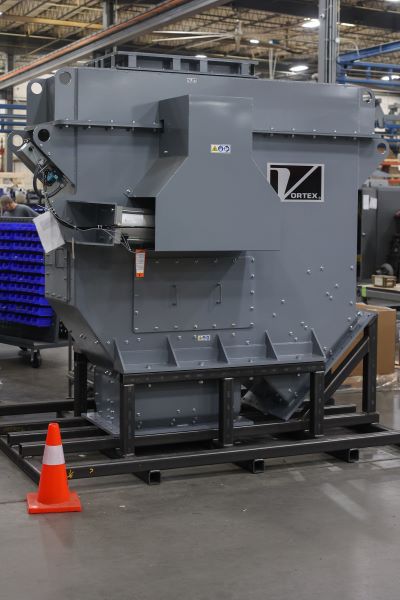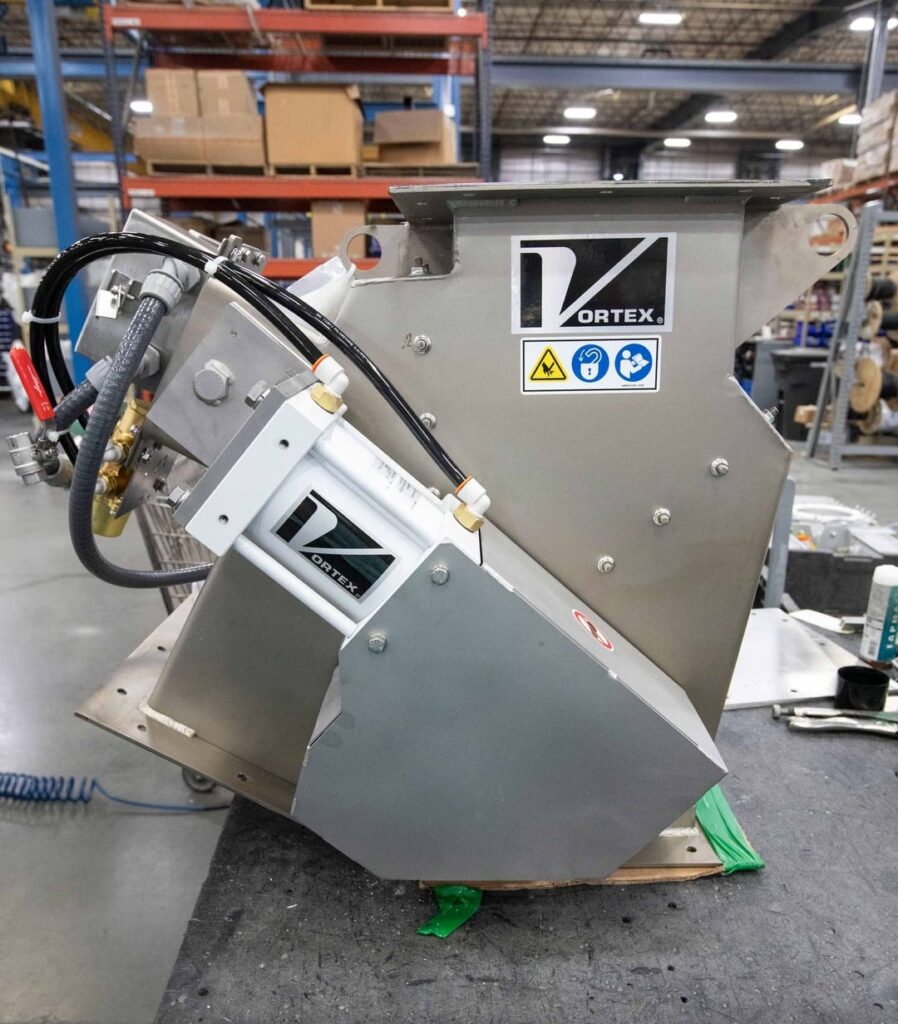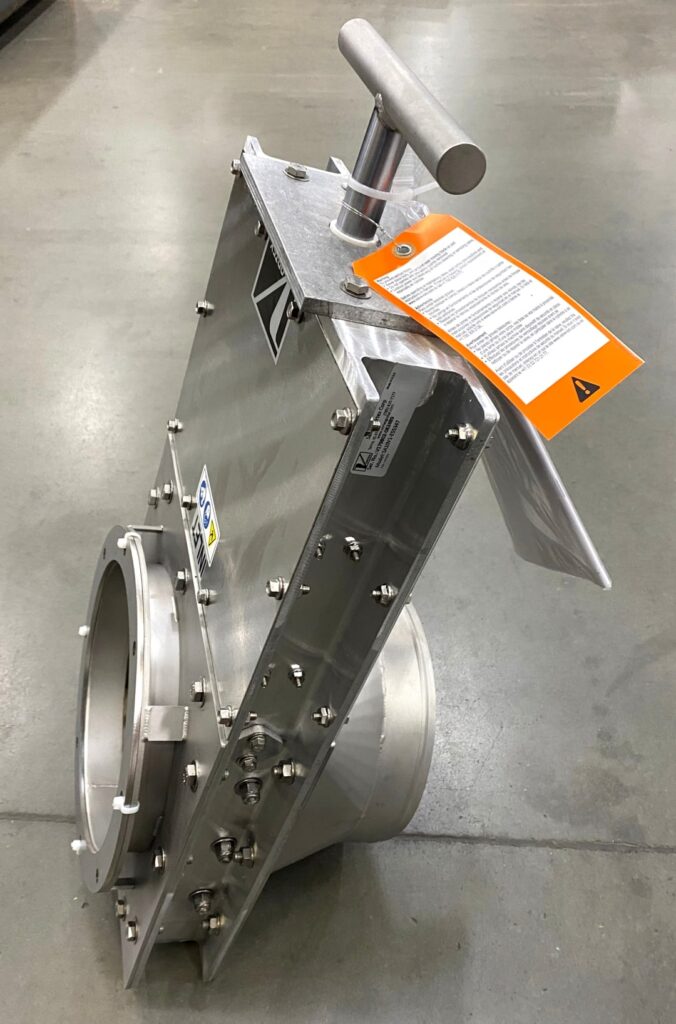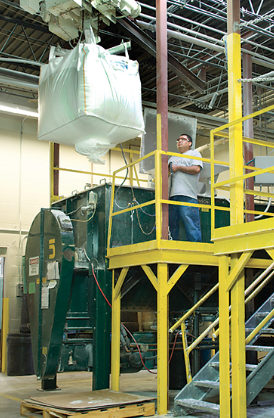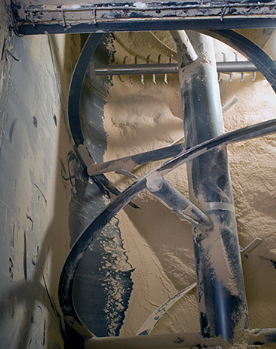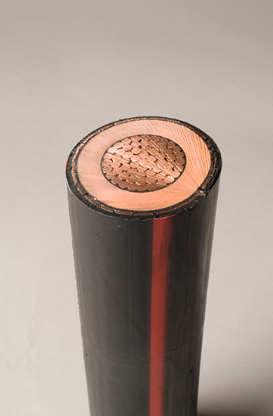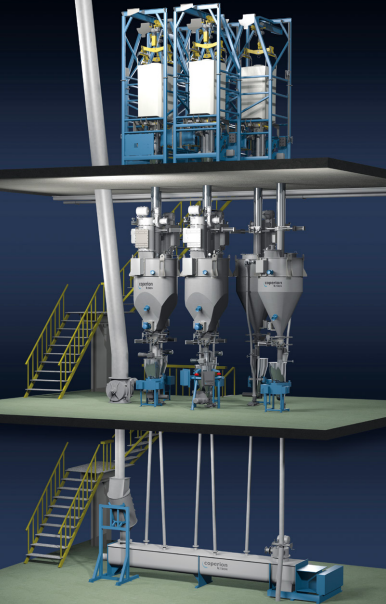The basic mixing process stimulates the absorption of peroxides by pelletized, thermoplastic polymers one-eighth of an inch (3.175 mm) in size. The peroxides act as curatives that give the polymers the ability to crosslink and become thermosetting. “As for the polymers, we use elastomers, polyolefins, and silicones, but mainly polyolefin-based materials,” Johnston says. “Generally the resin must absorb from one to about three percent of its weight in peroxide, which sometimes requires pre-heating of the pellets. In addition,” he continues, “the R&D department is looking at antioxidants that are liquid at room temperature.” Antioxidants can extend the lifetimes of the final materials and improve their electrical properties.

